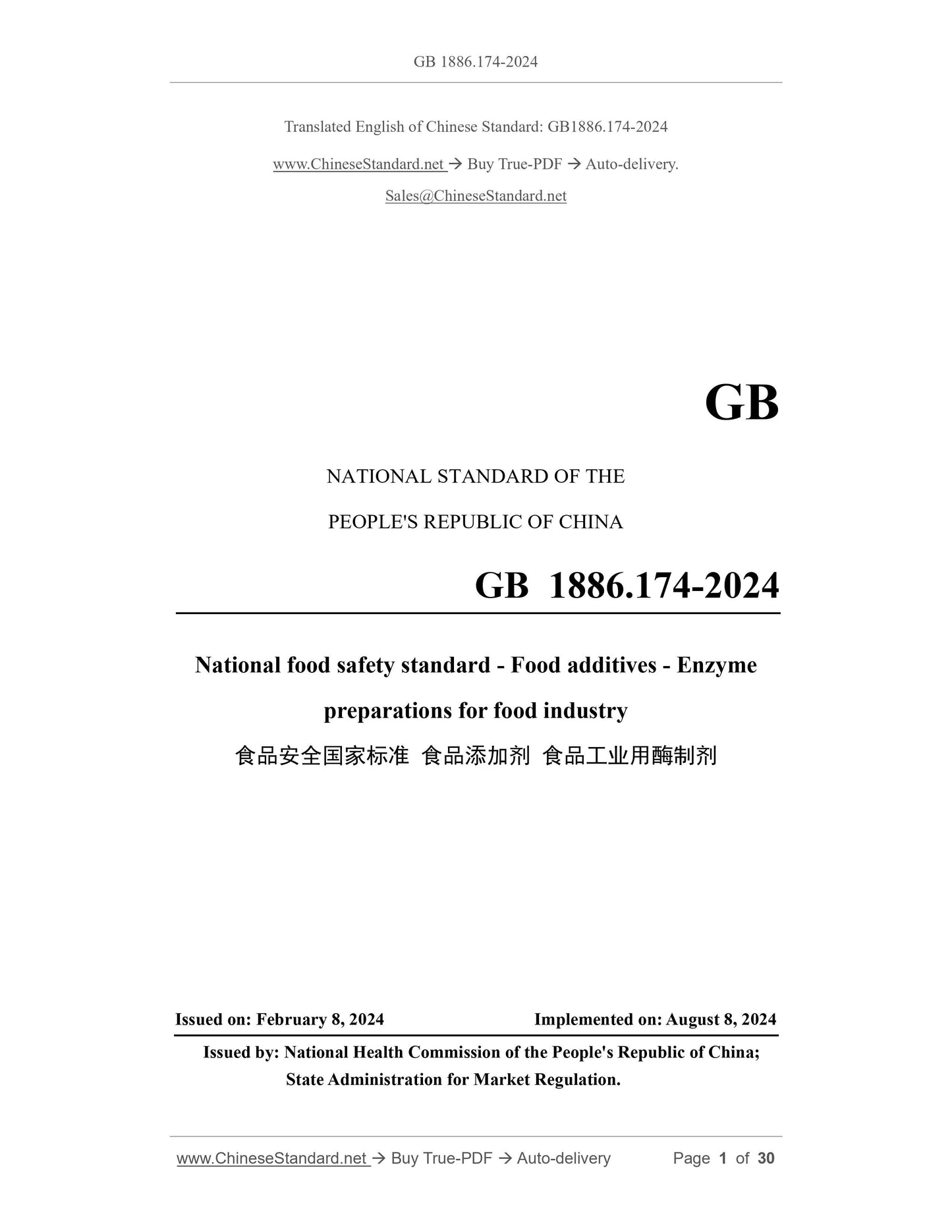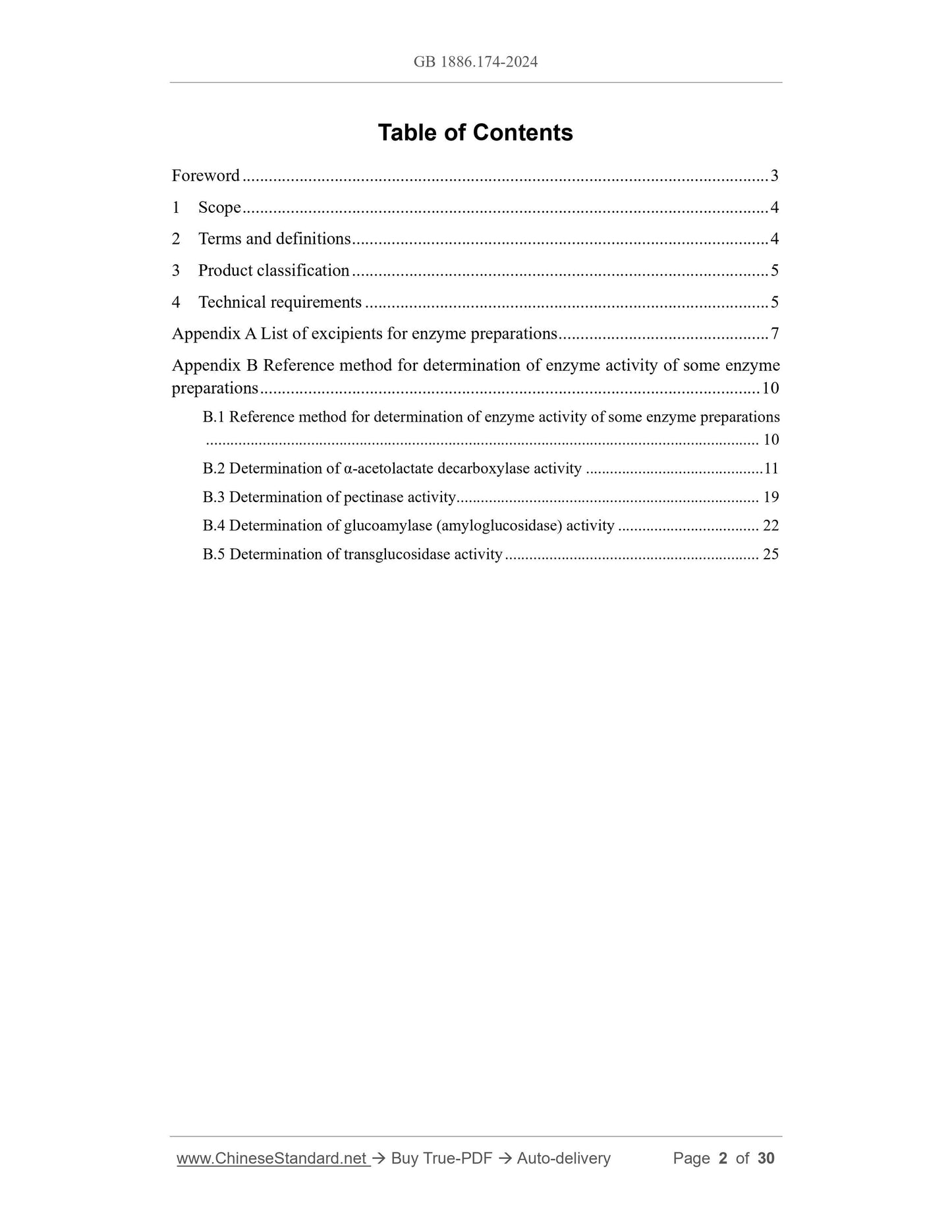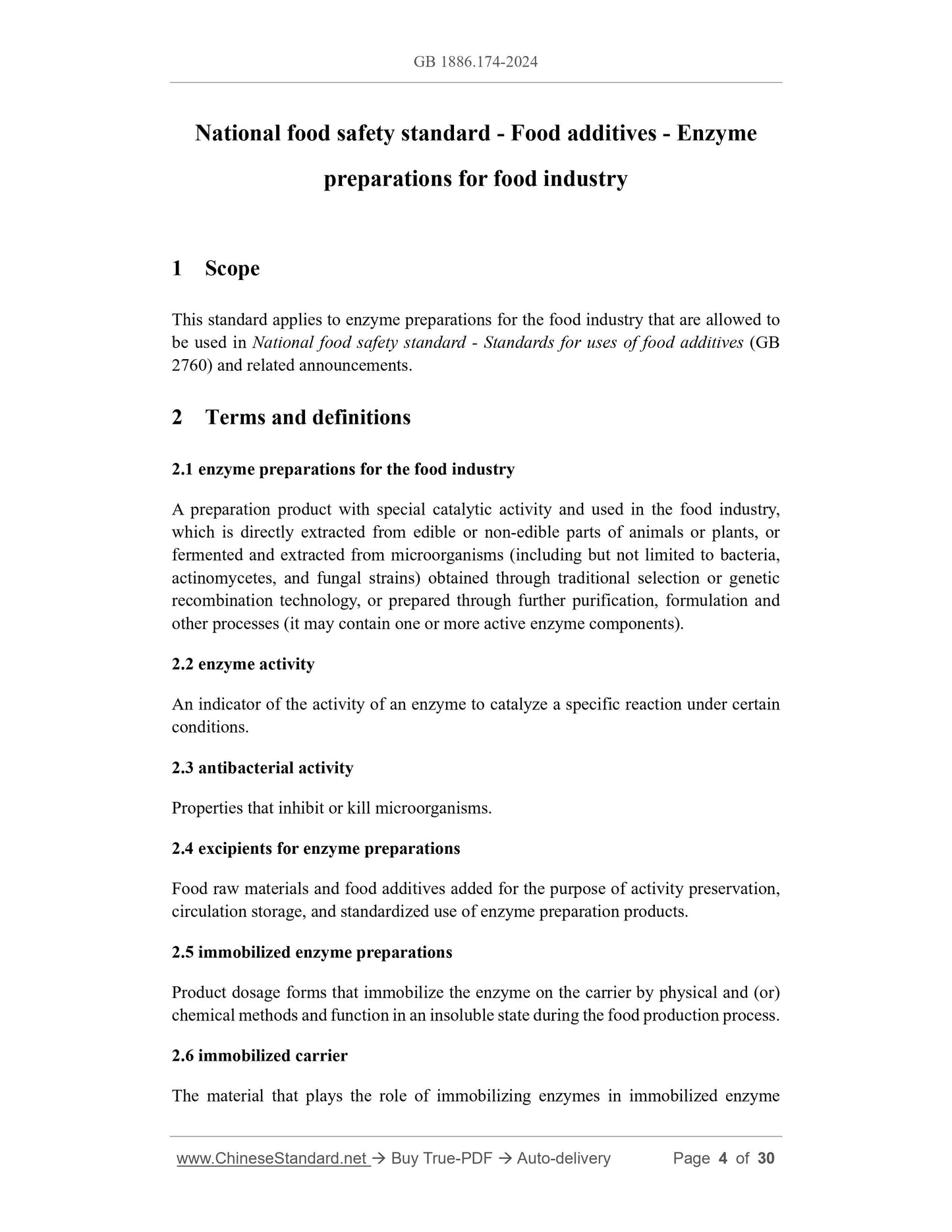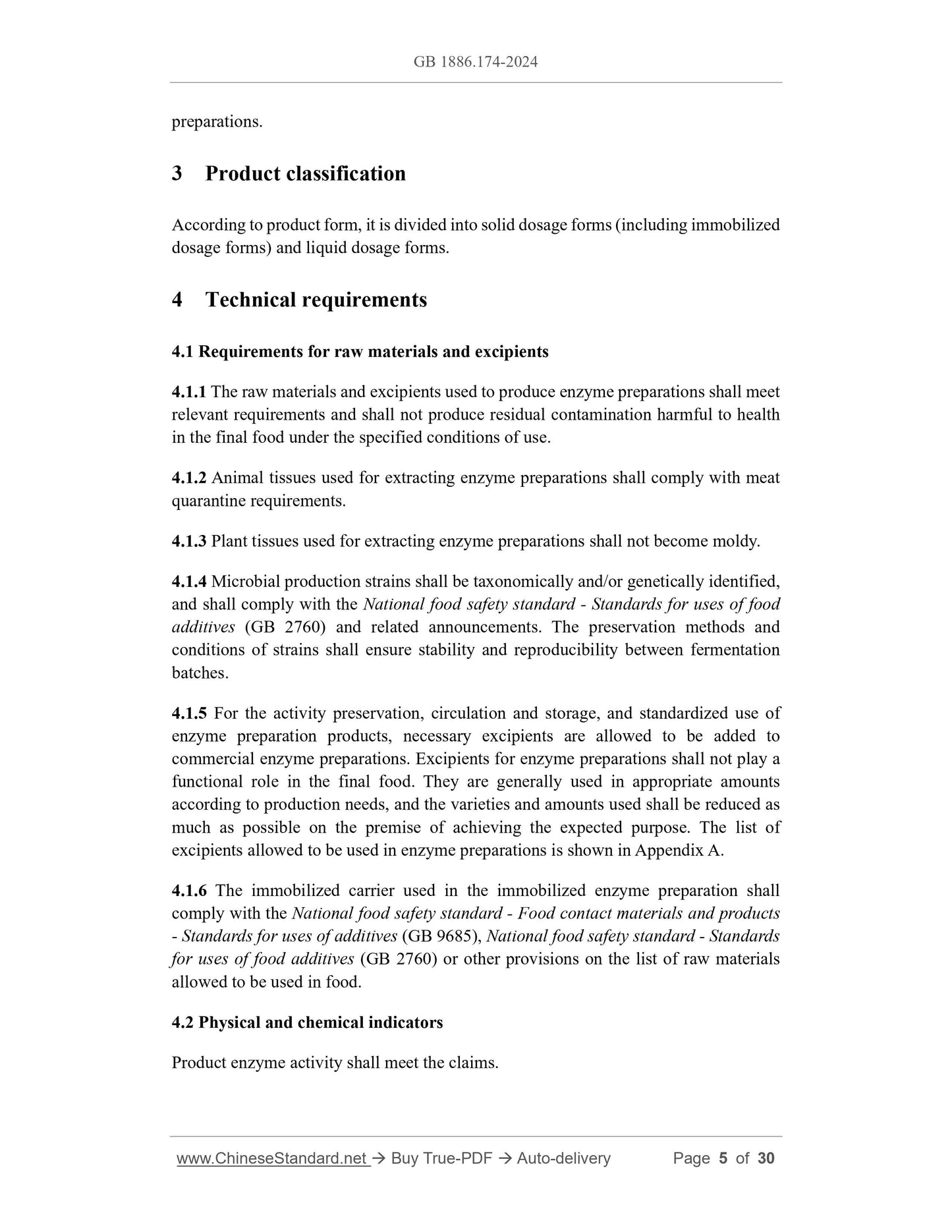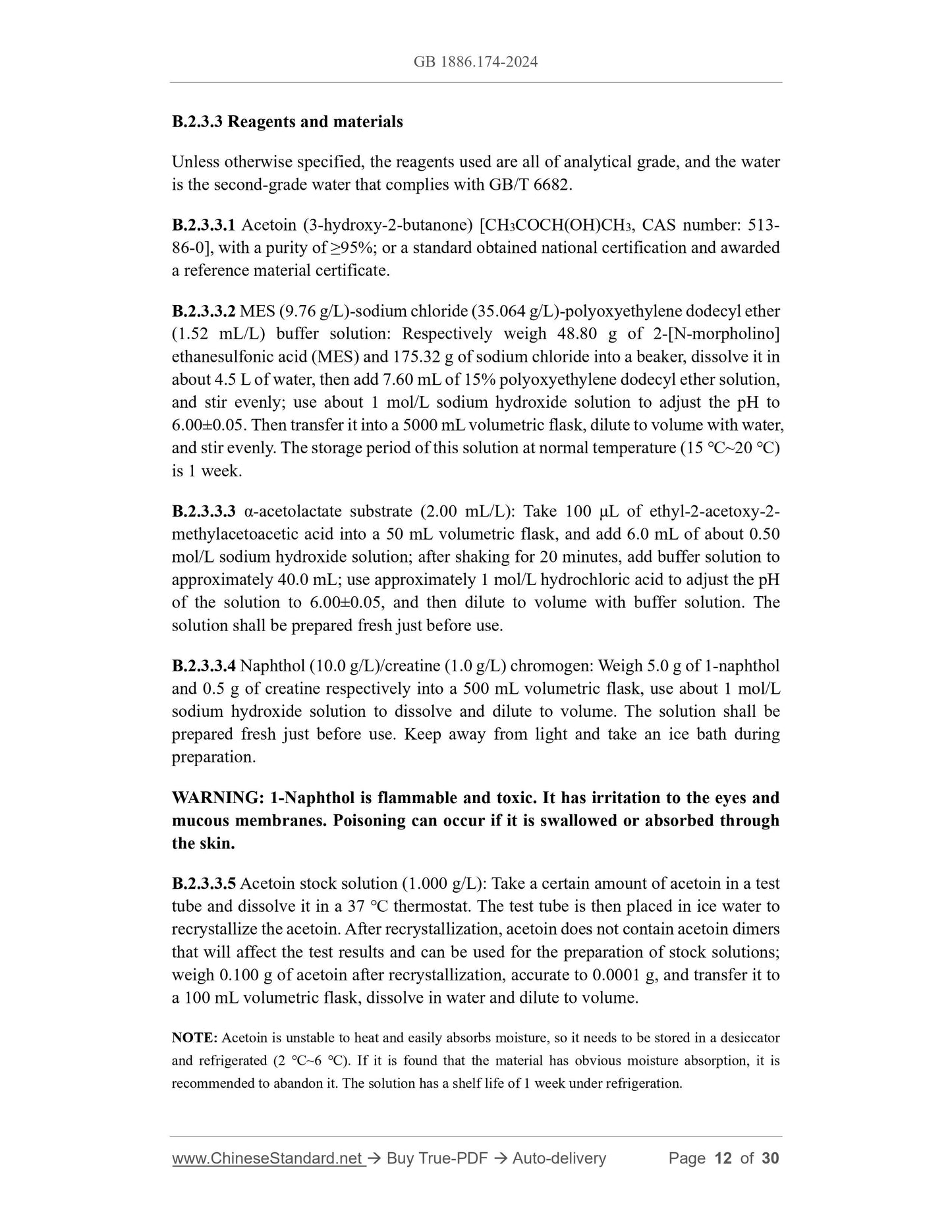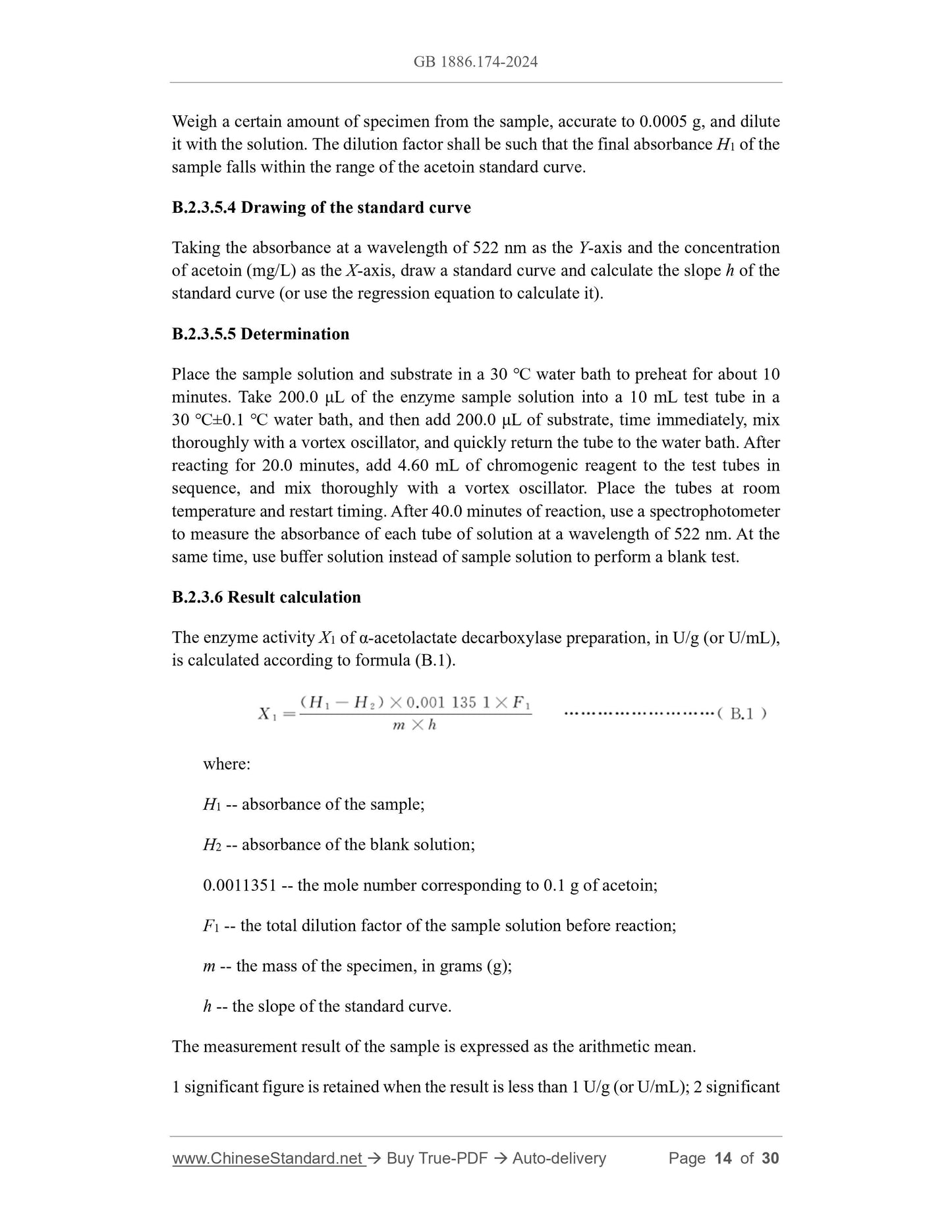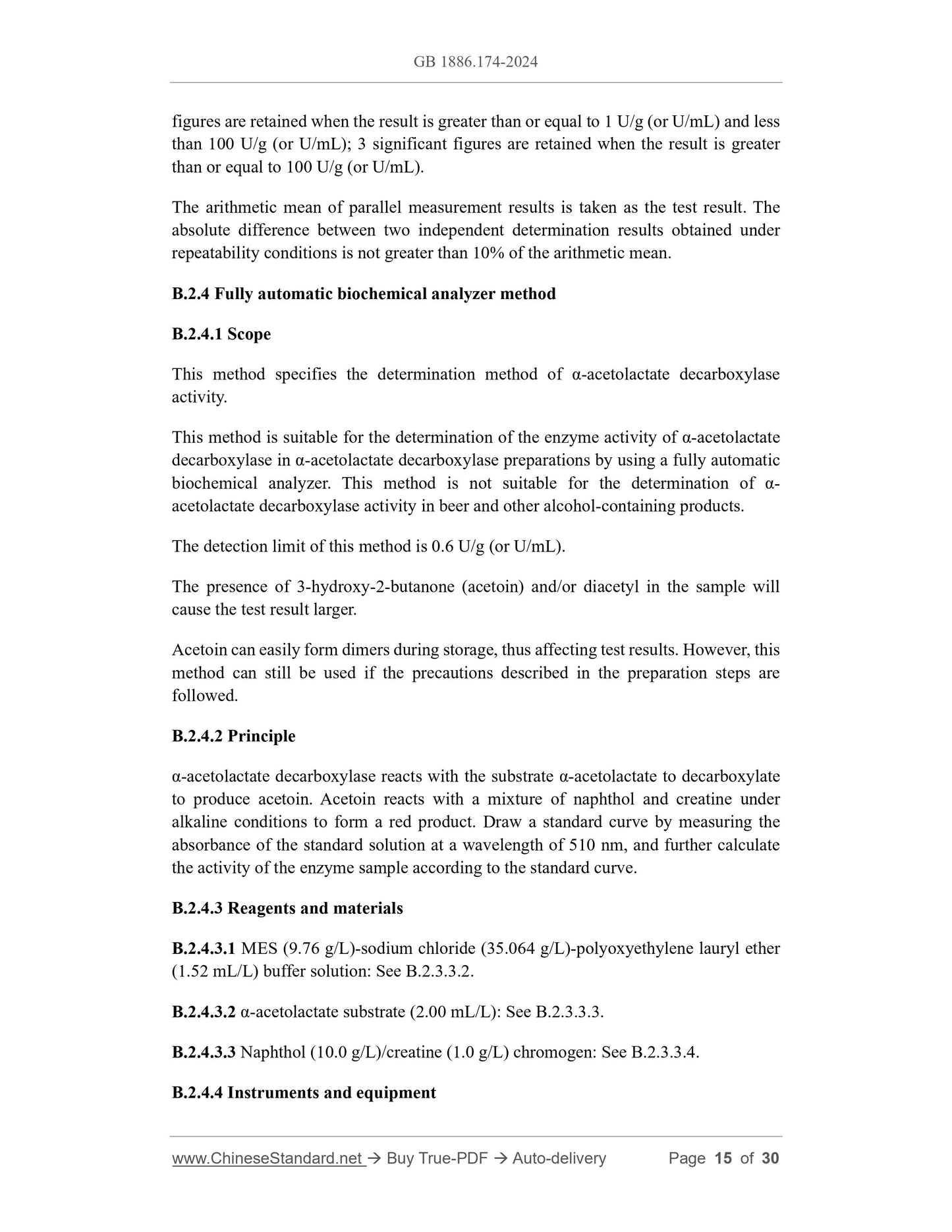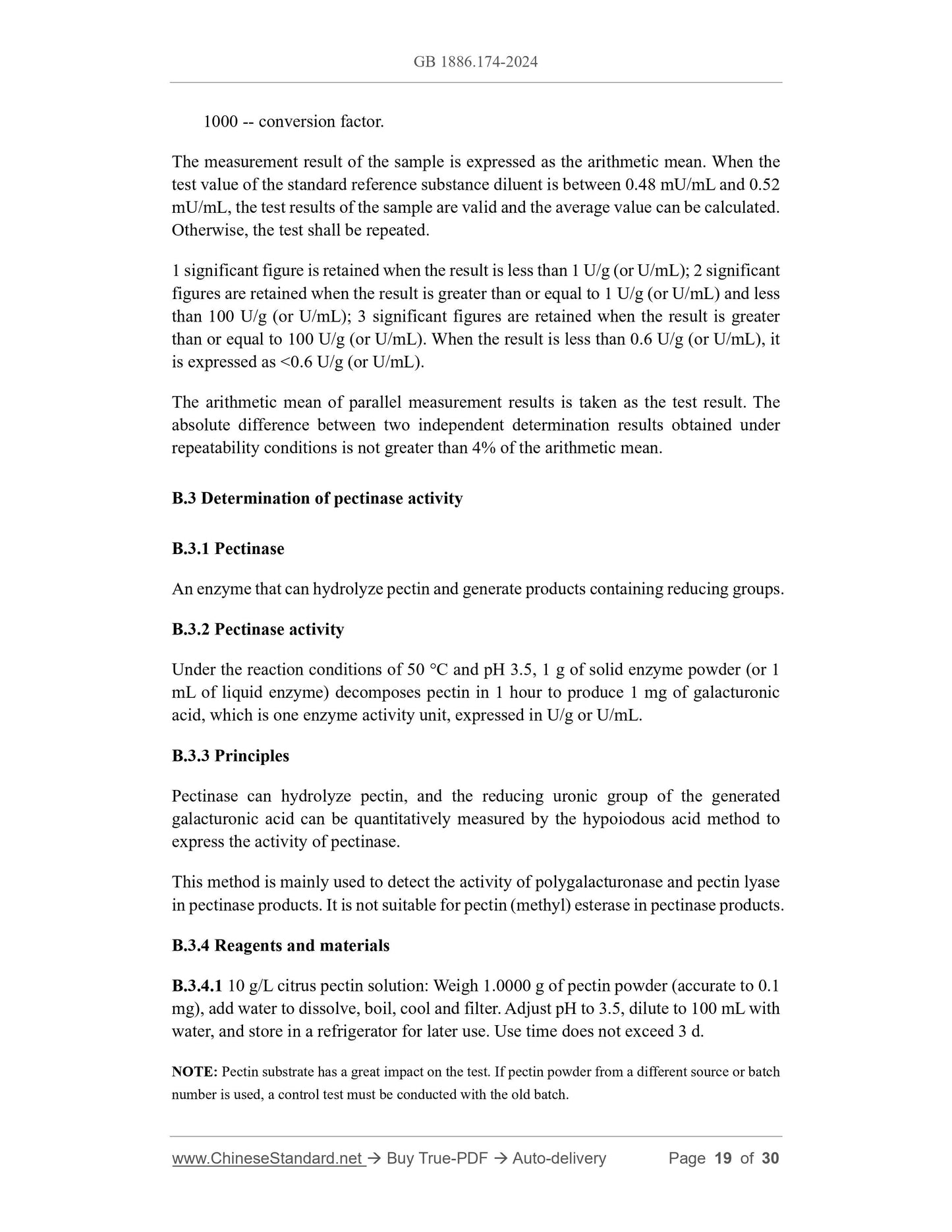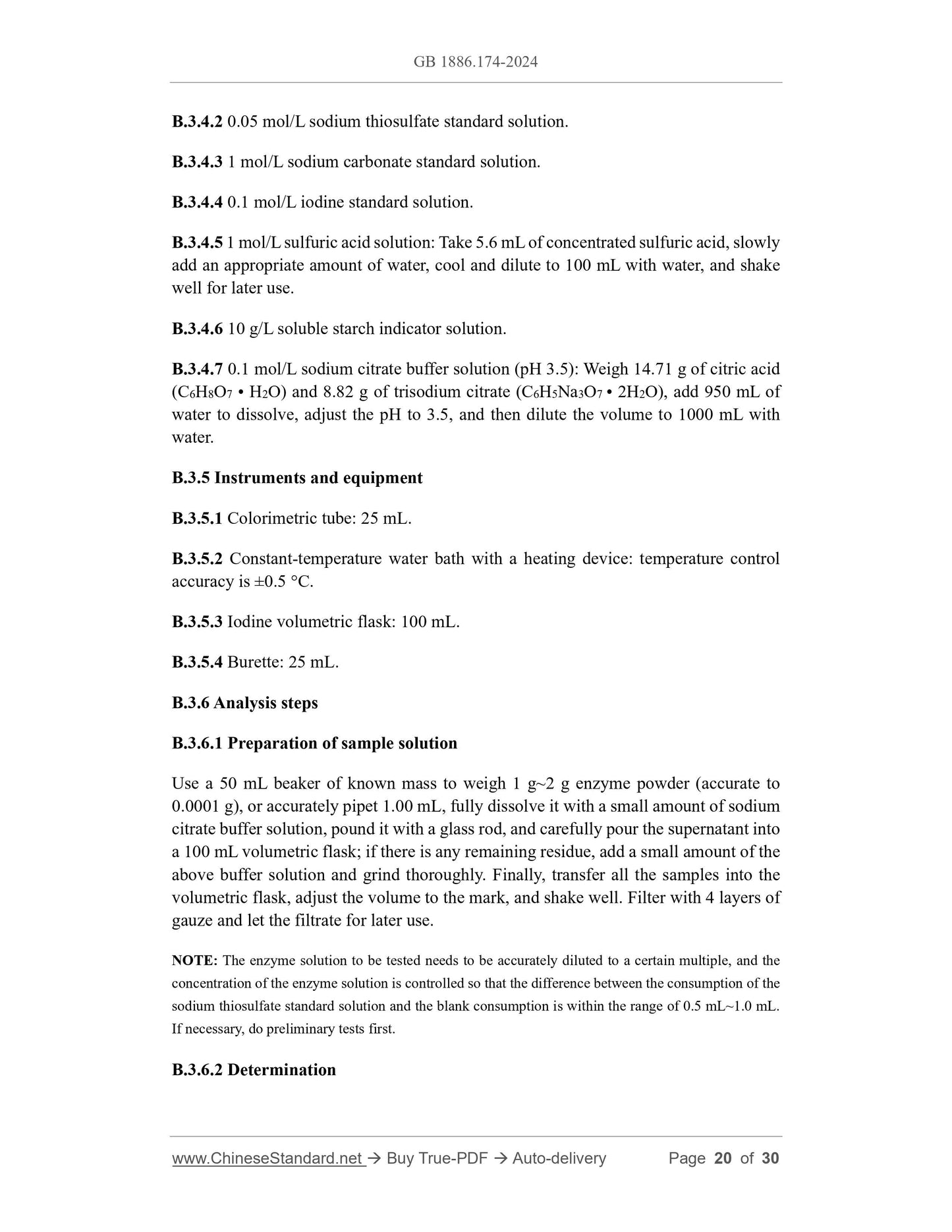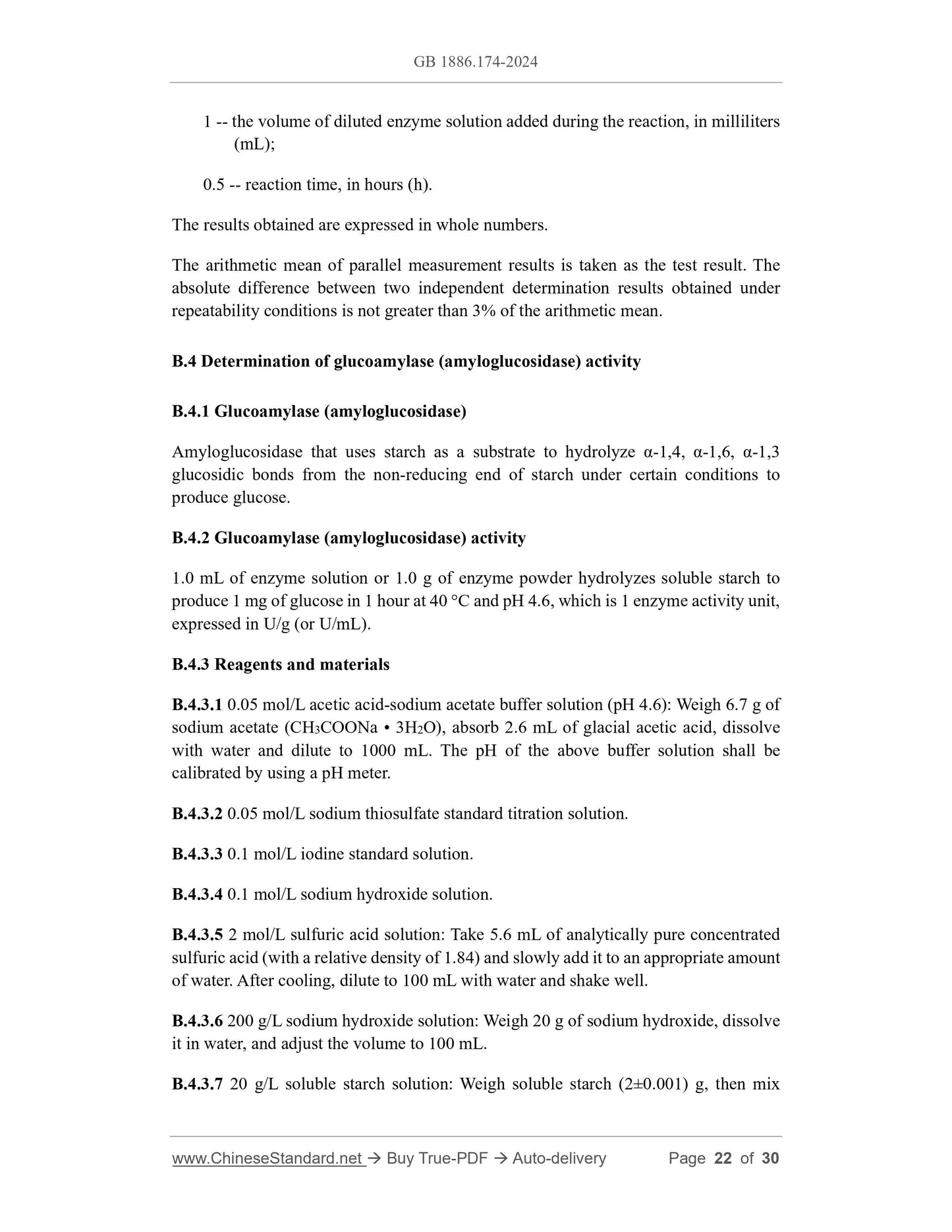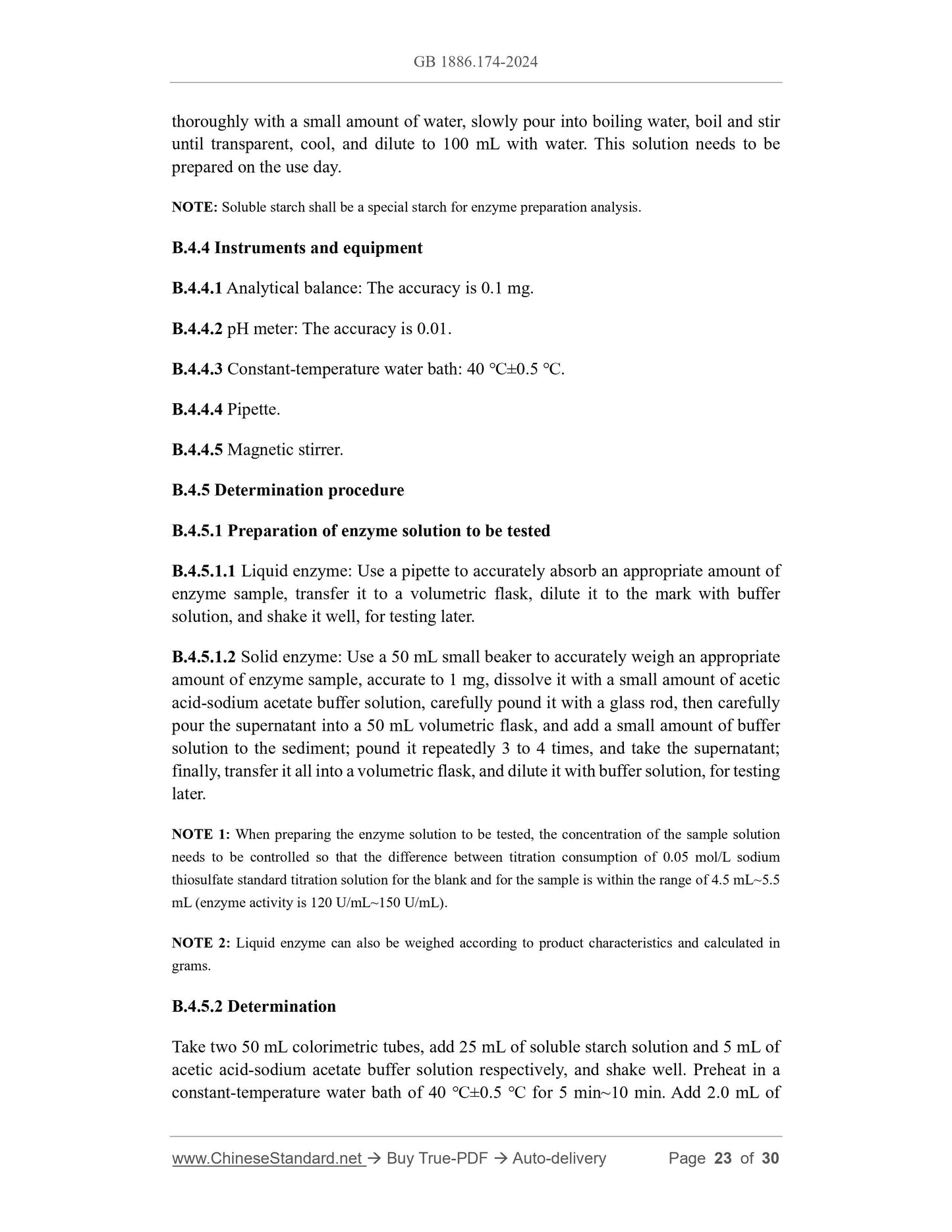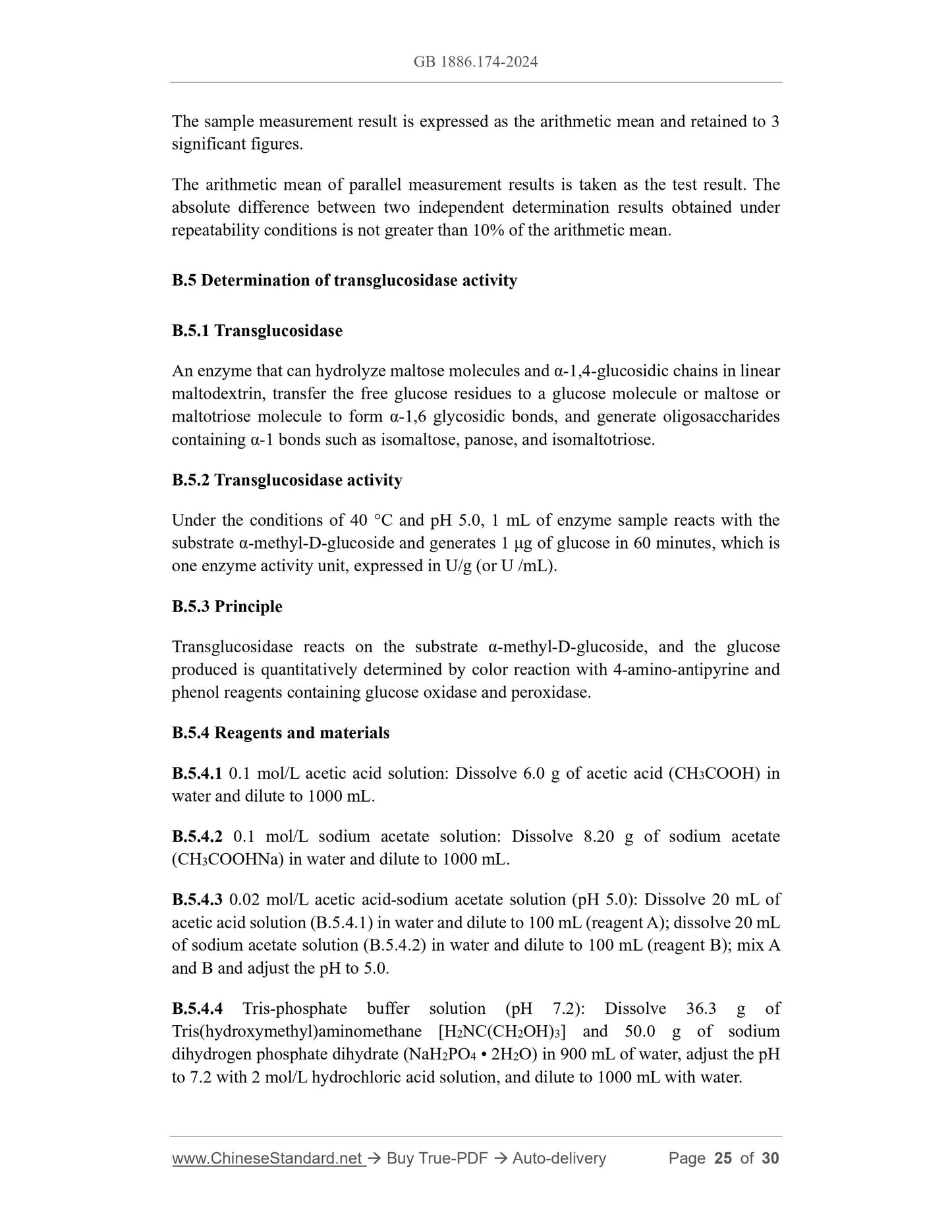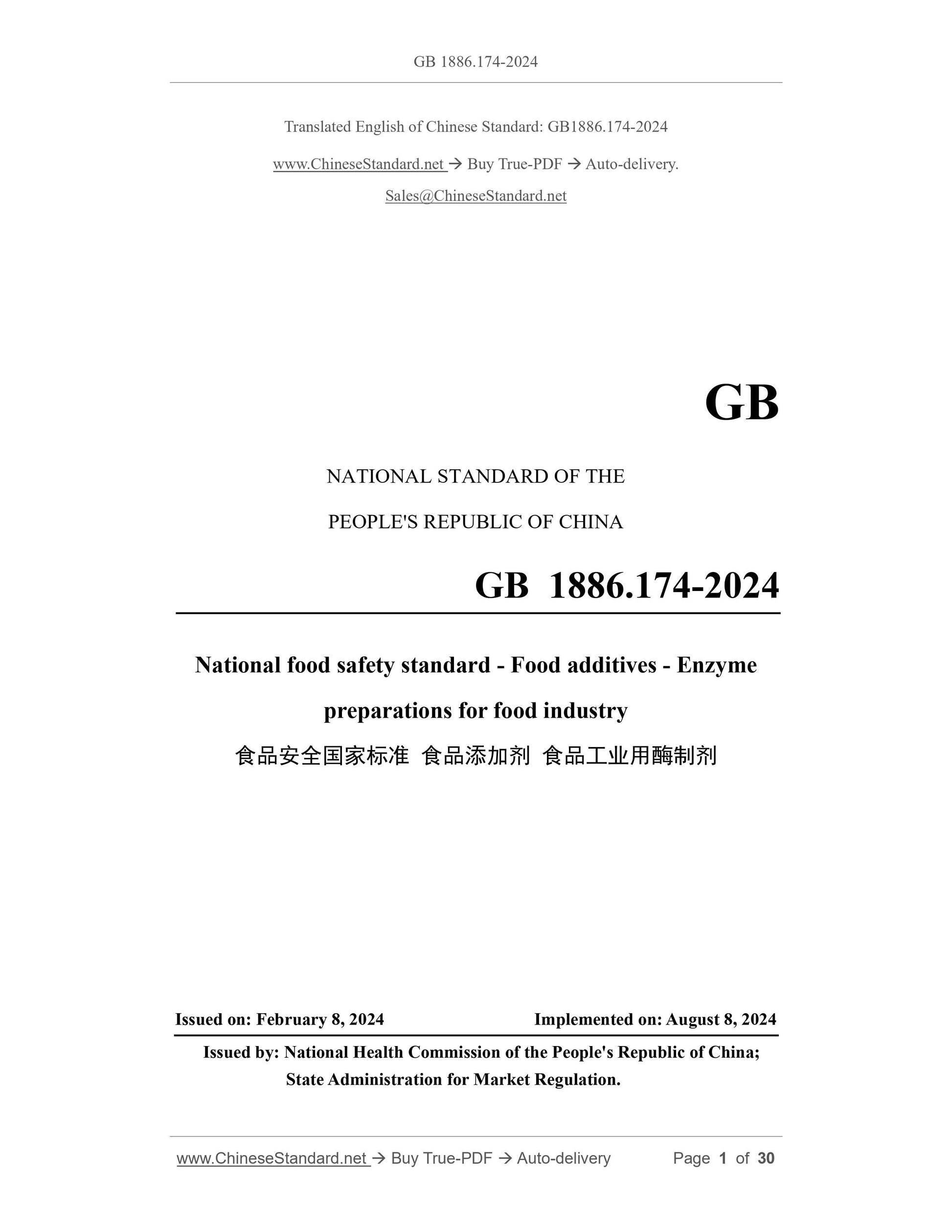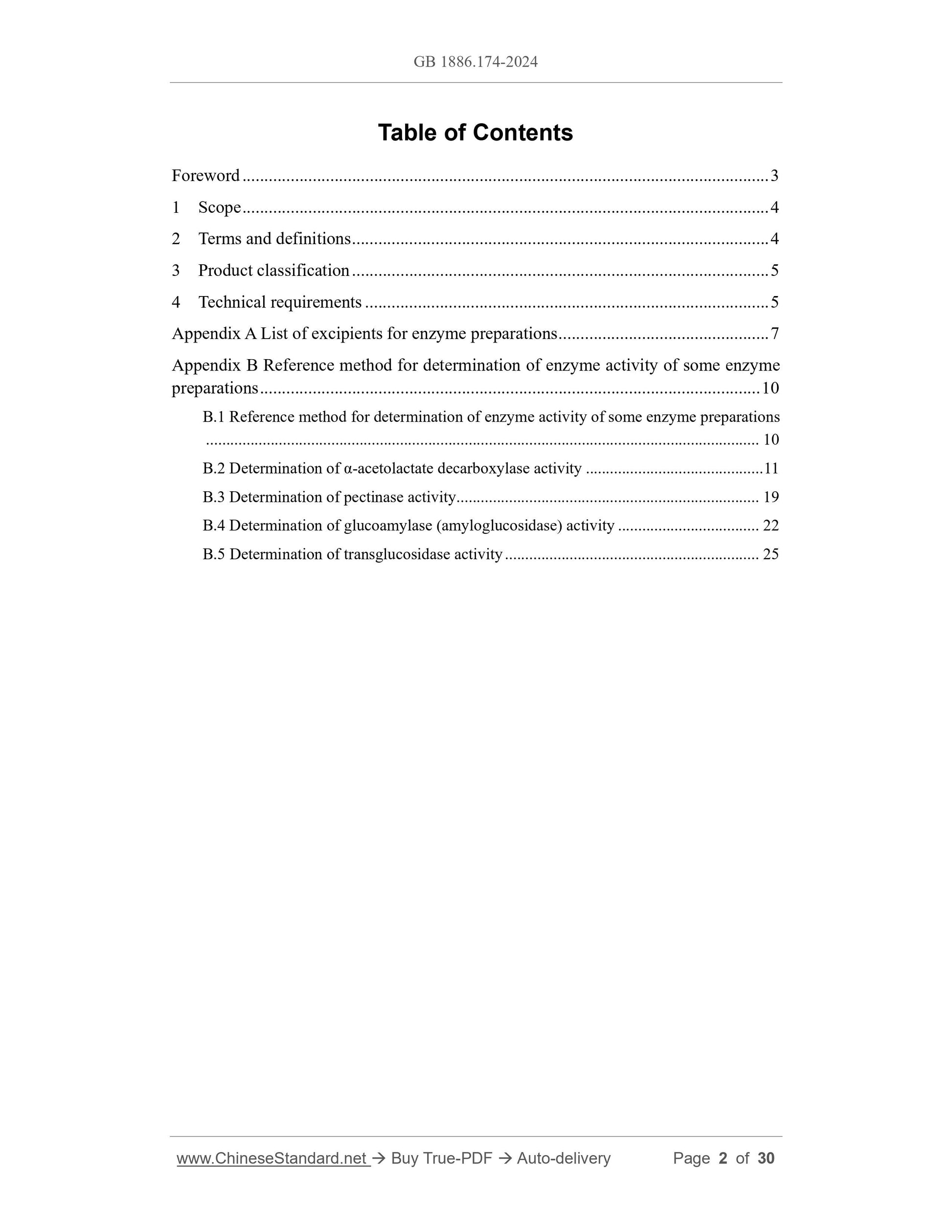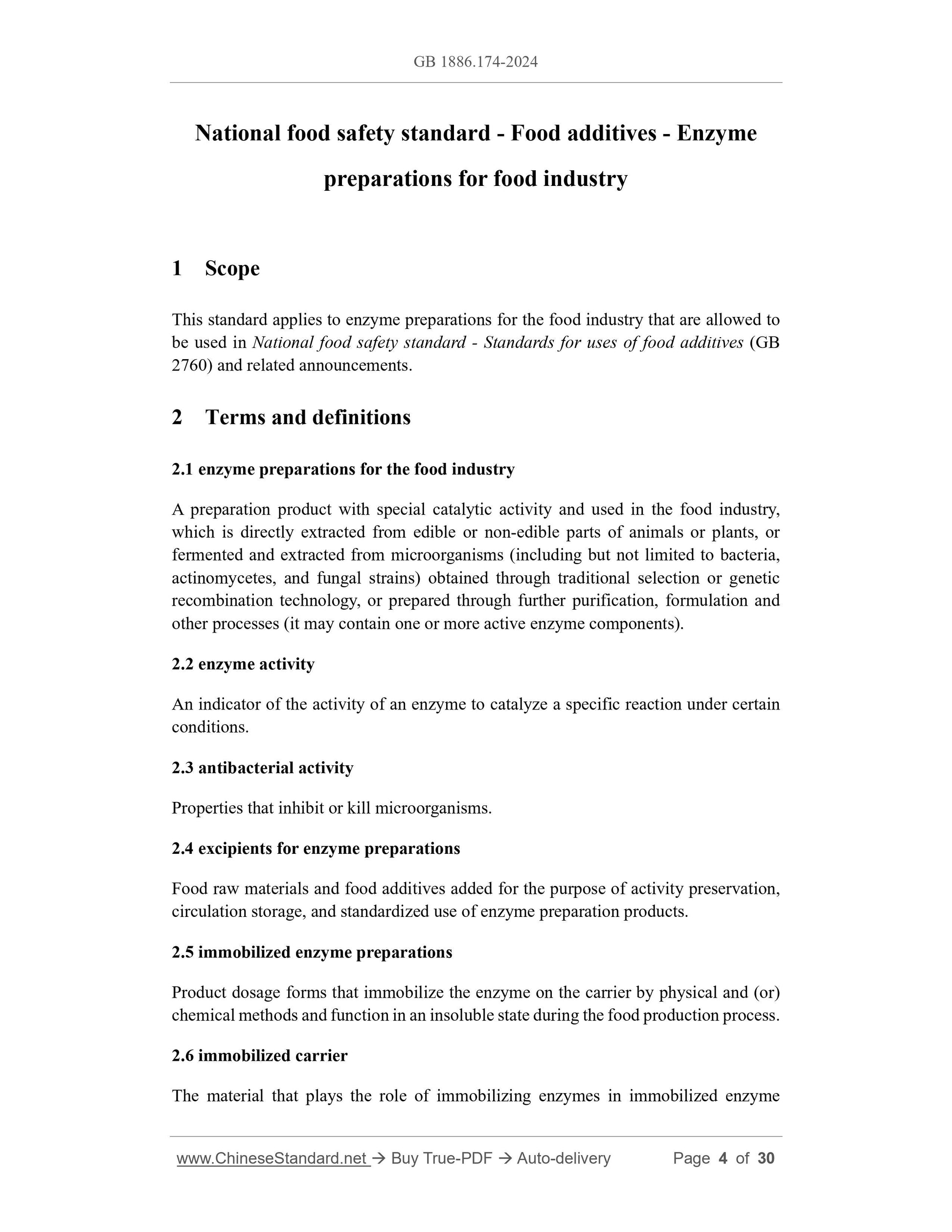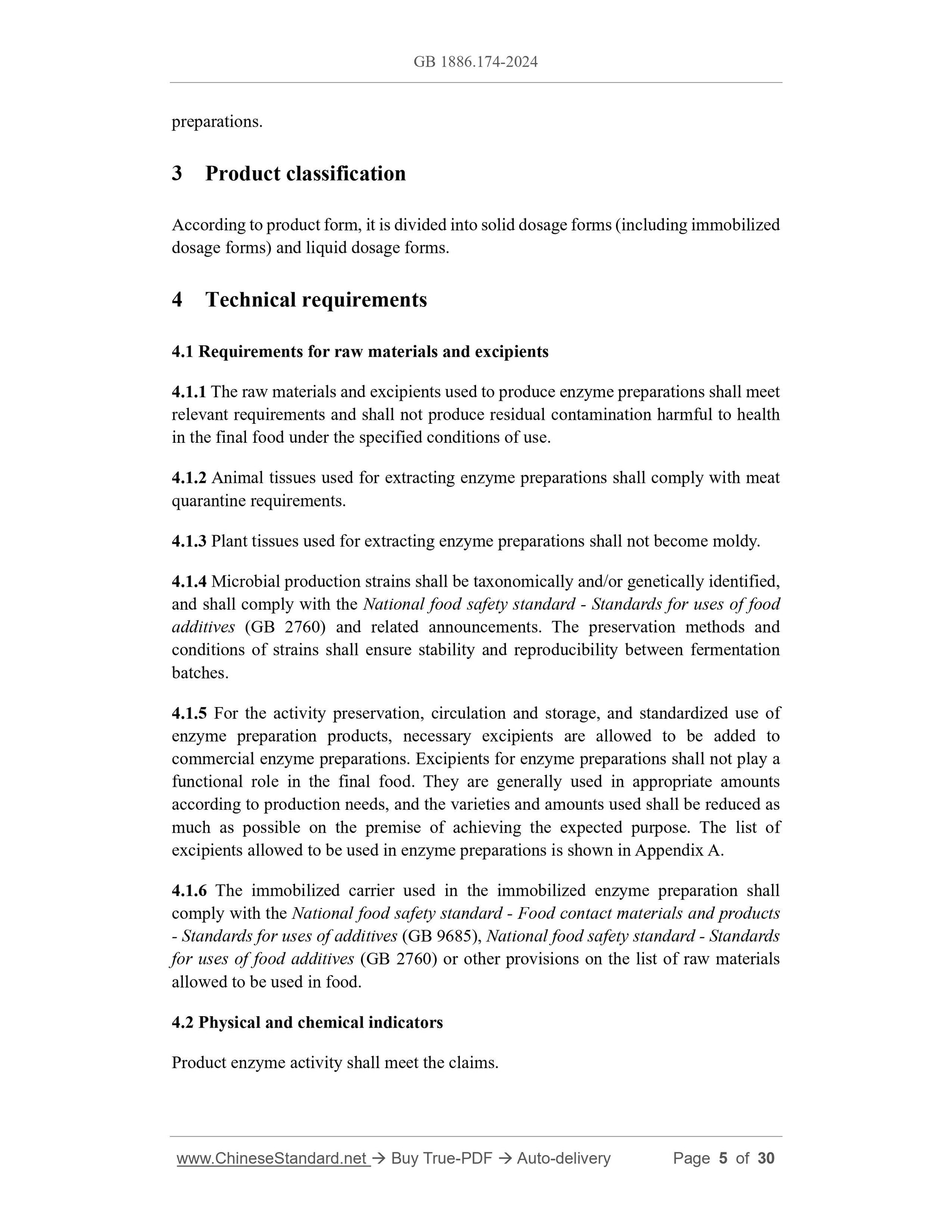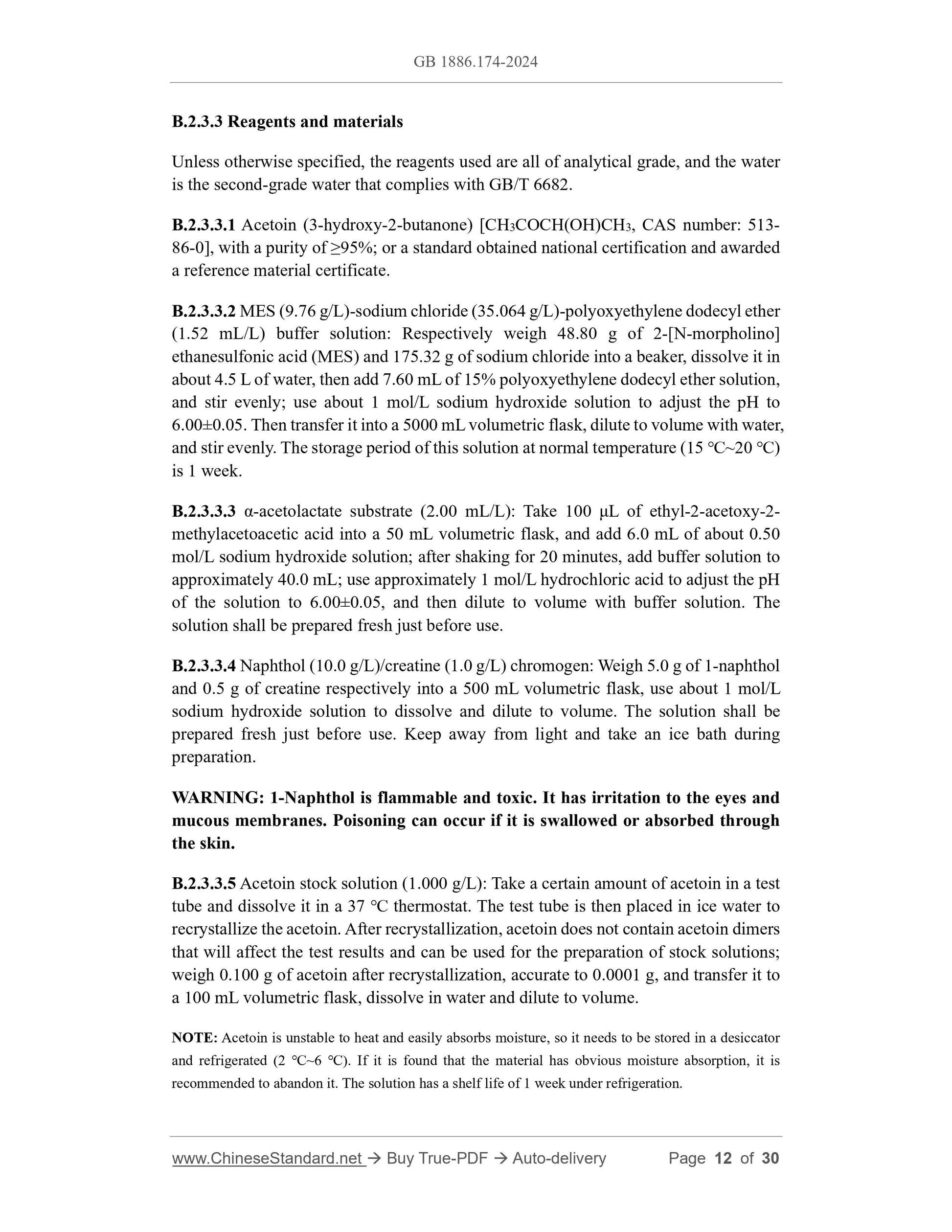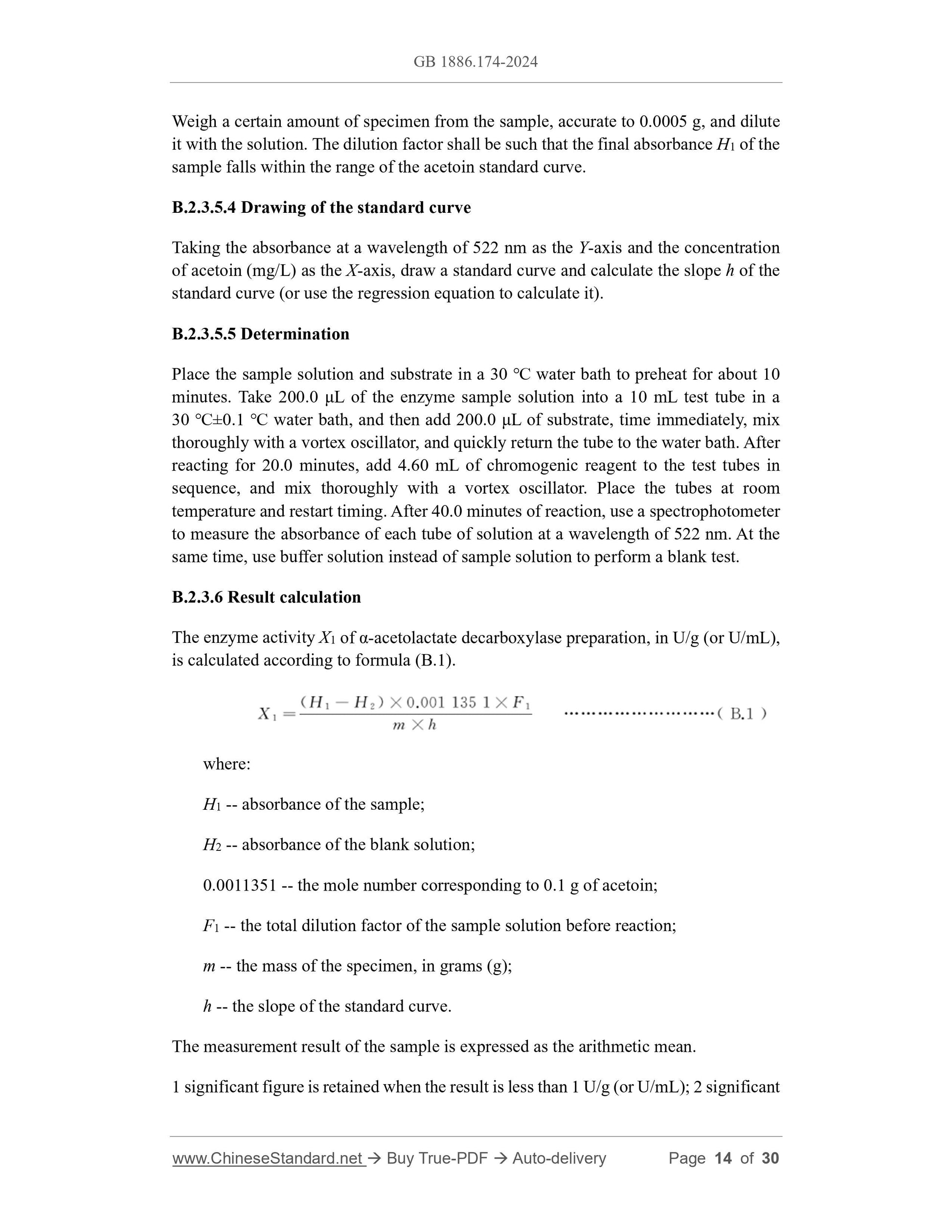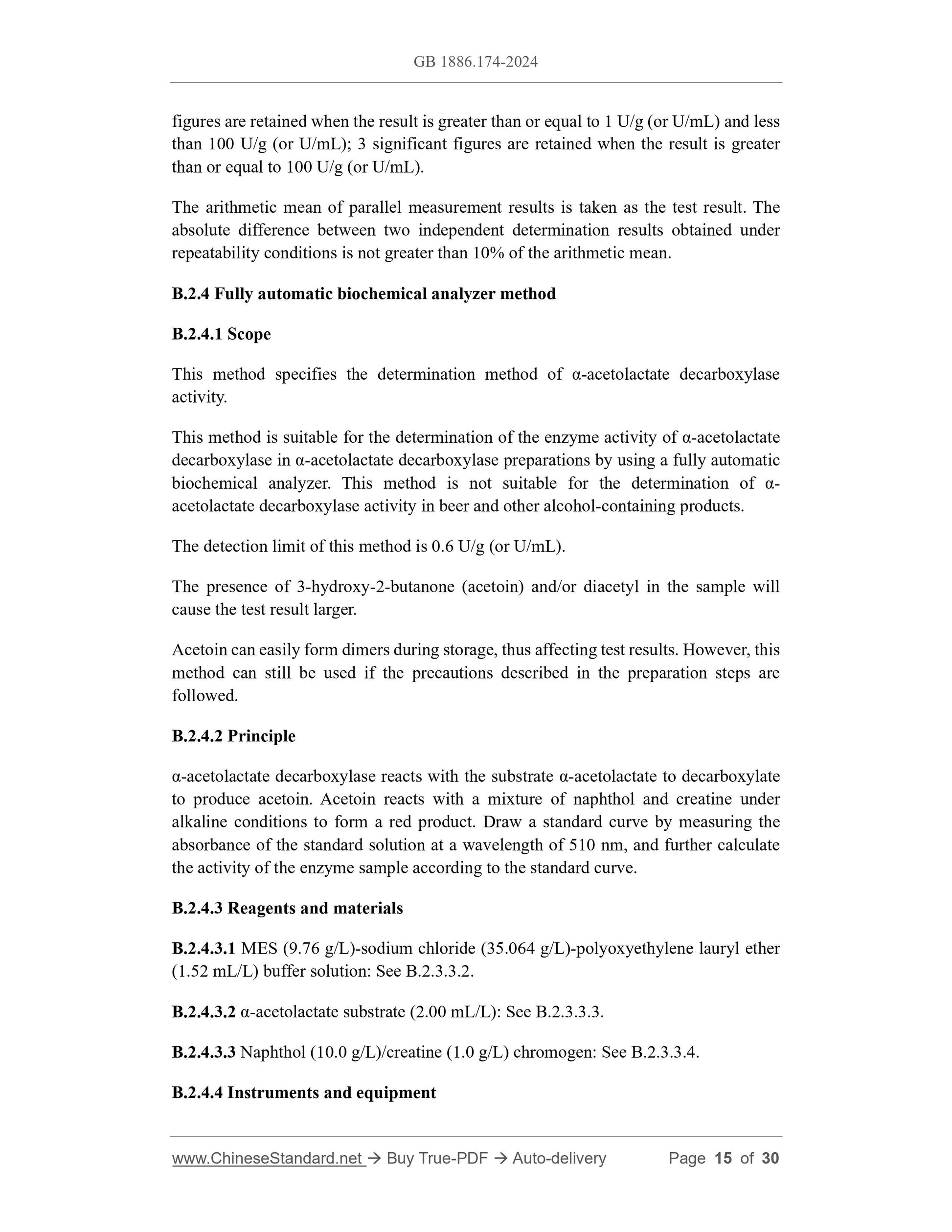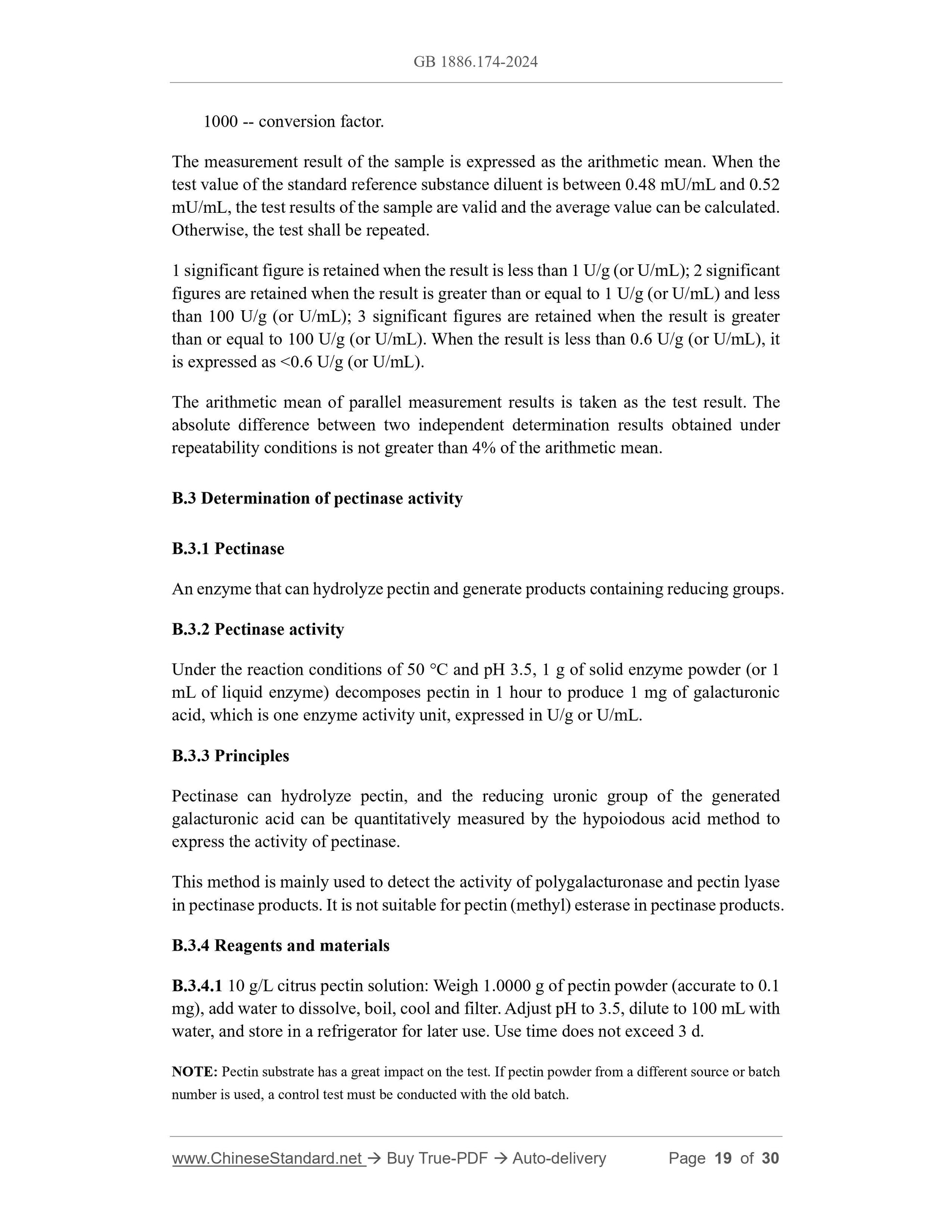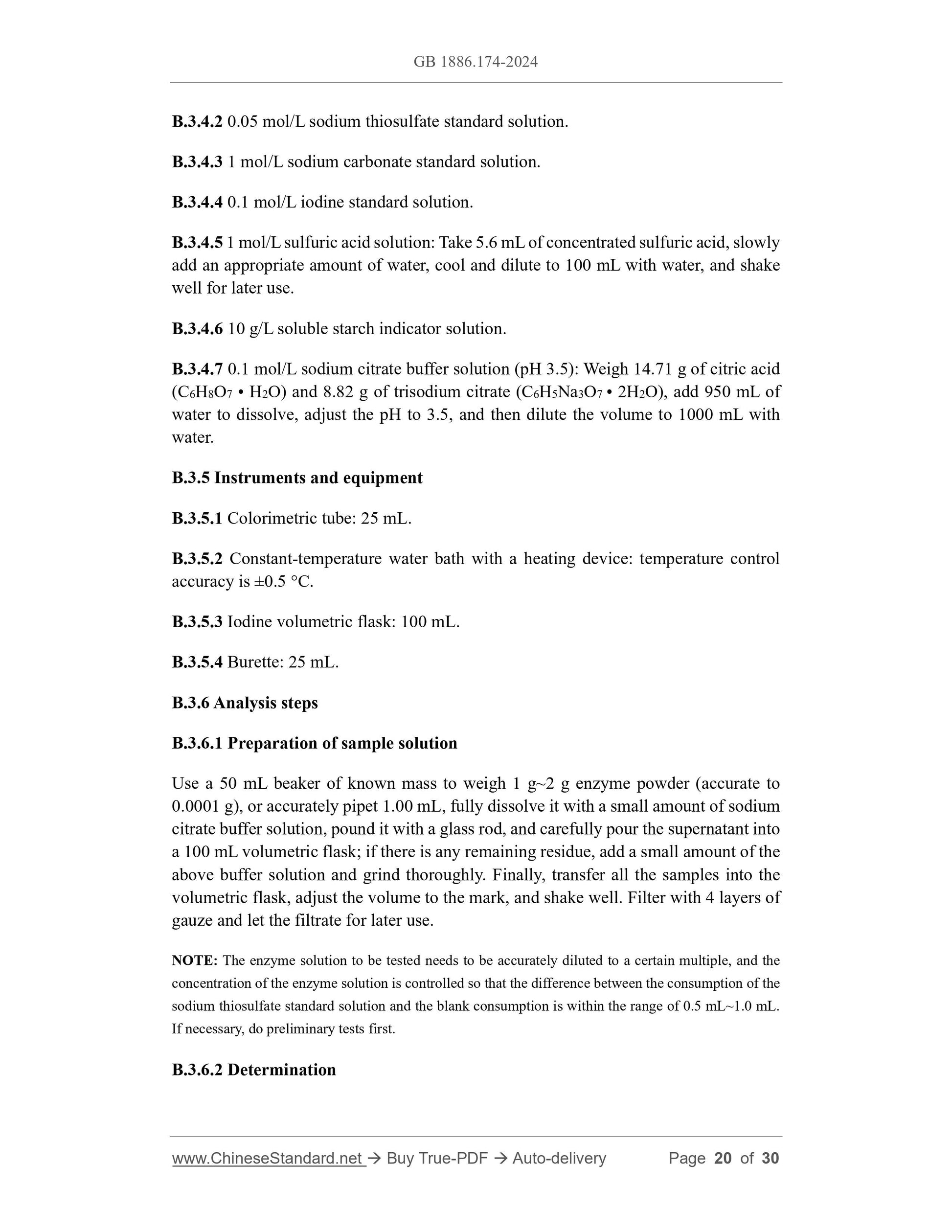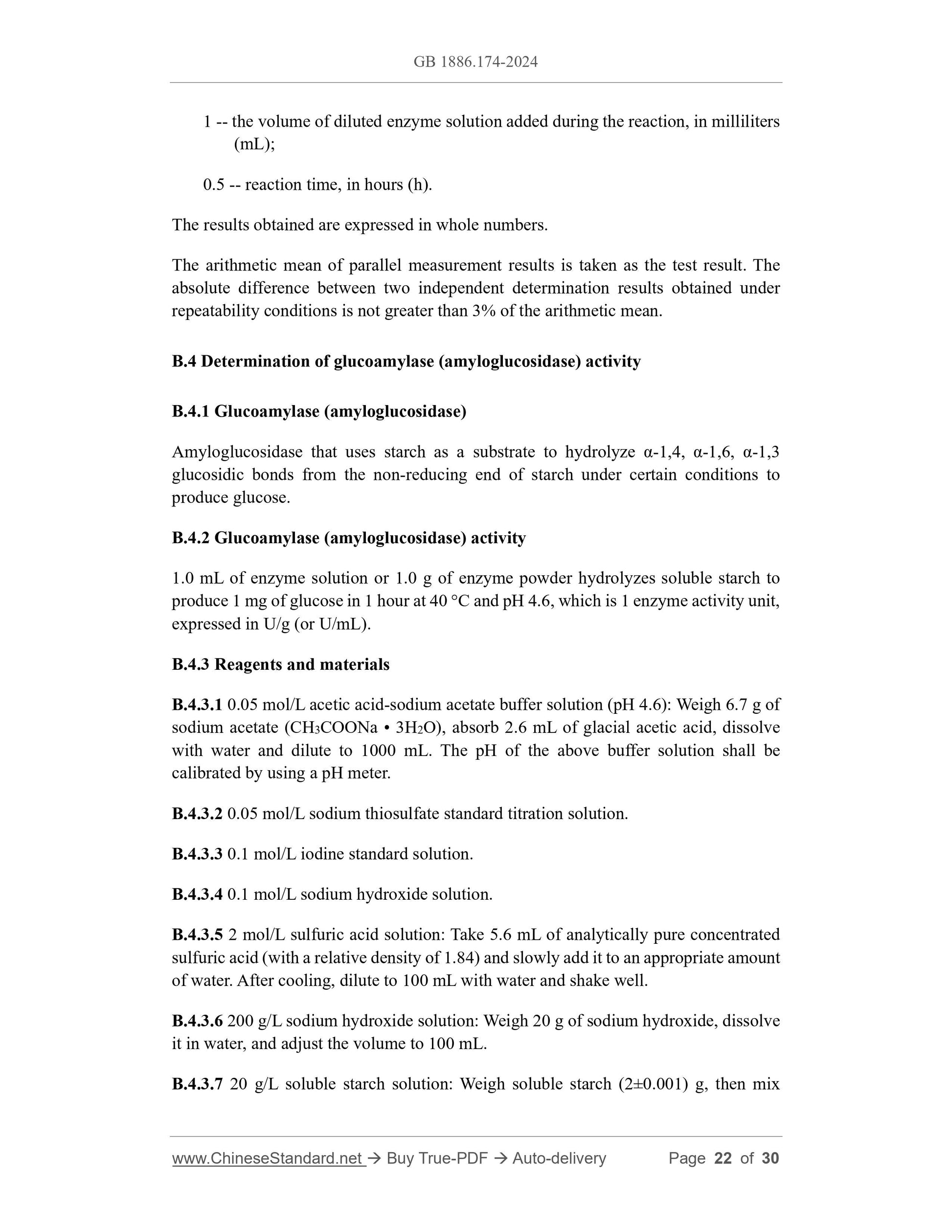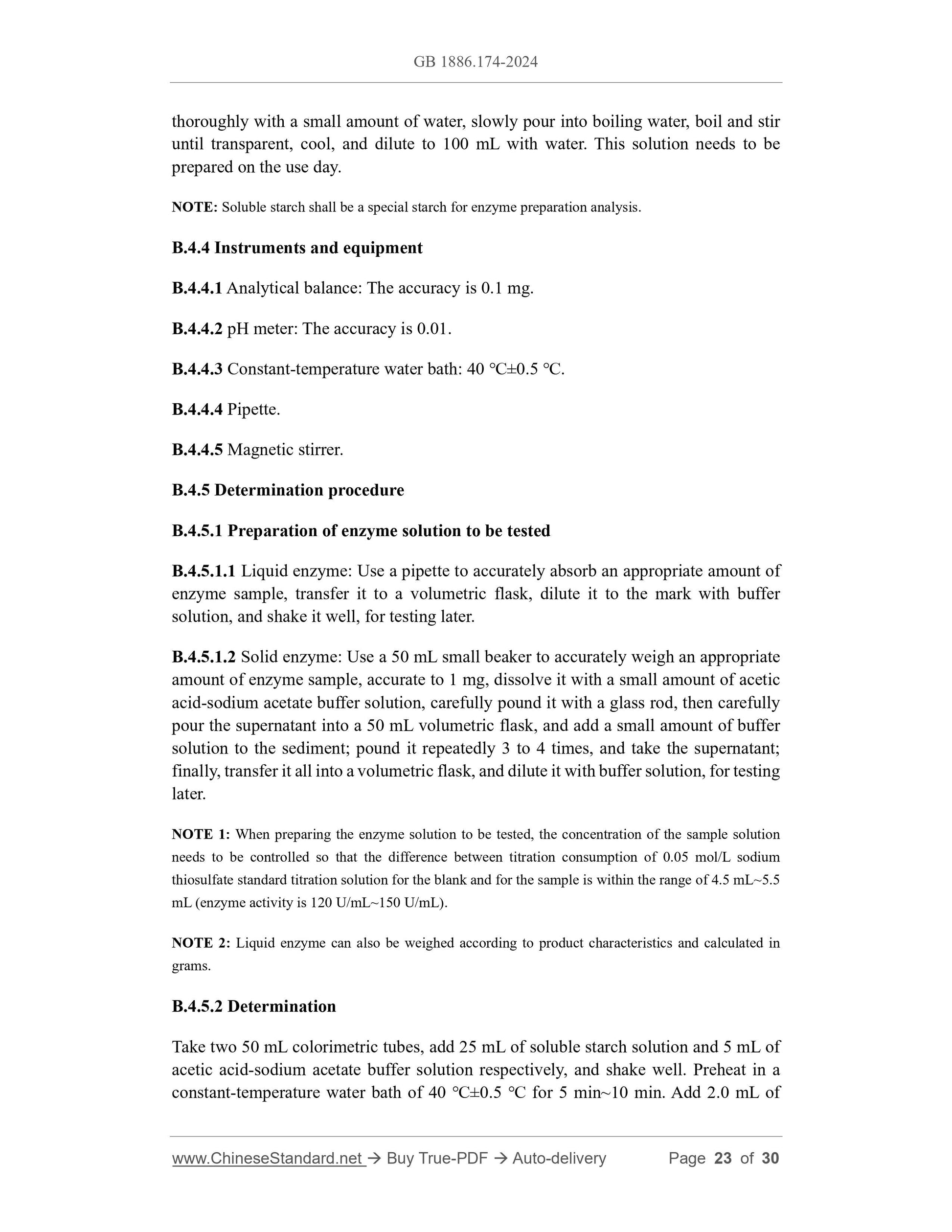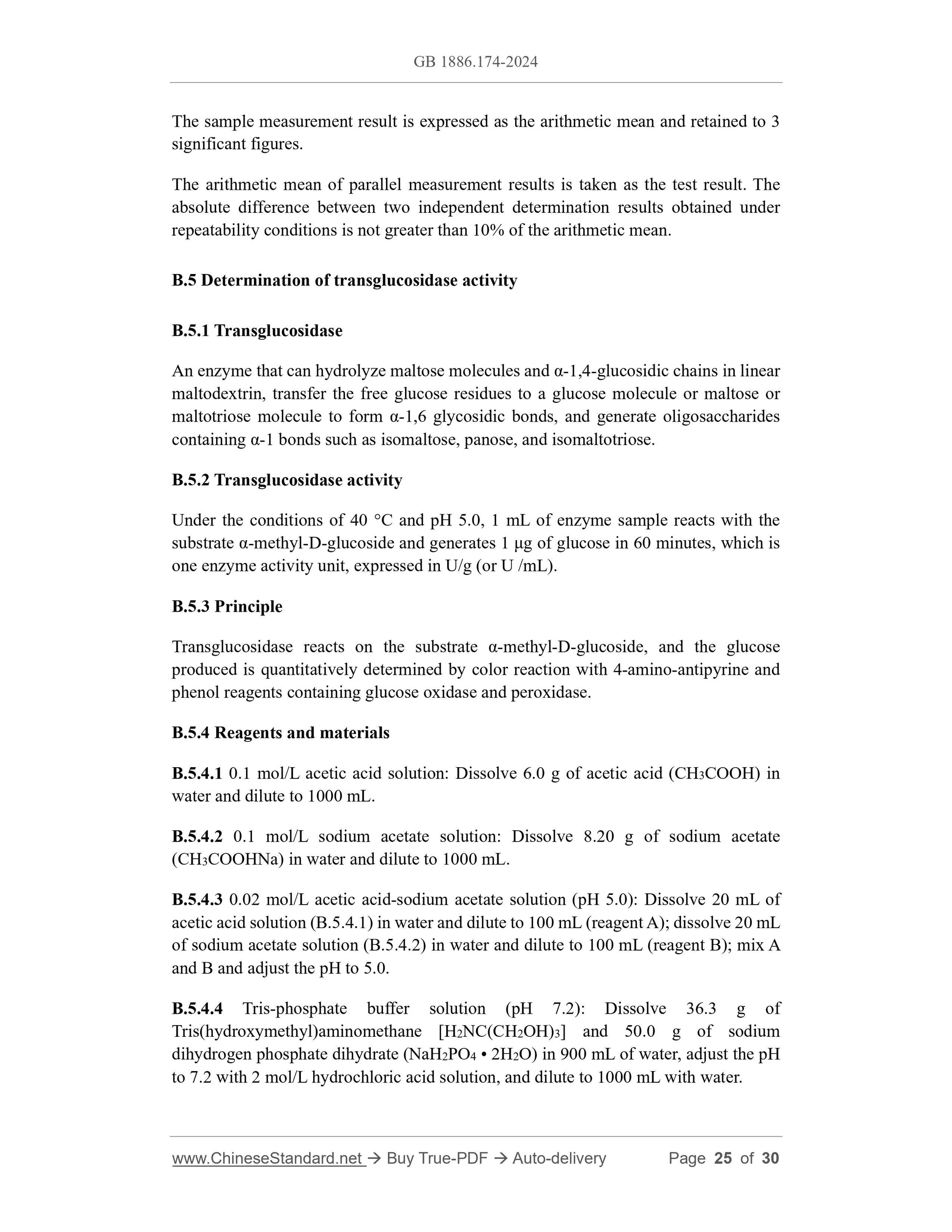1
/
of
12
www.ChineseStandard.us -- Field Test Asia Pte. Ltd.
GB 1886.174-2024 English PDF
GB 1886.174-2024 English PDF
Regular price
$320.00
Regular price
Sale price
$320.00
Unit price
/
per
Shipping calculated at checkout.
Couldn't load pickup availability
GB 1886.174-2024: National Food Safety Standard - Food additives - Enzyme Preparations for Food Industry
Delivery: 9 seconds. Download (and Email) true-PDF + Invoice.Get Quotation: Click GB 1886.174-2024 (Self-service in 1-minute)
Newer / historical versions: GB 1886.174-2024
Preview True-PDF
Scope
This standard applies to enzyme preparations for the food industry that are allowed tobe used in National food safety standard - Standards for uses of food additives (GB
2760) and related announcements.
Basic Data
| Standard ID | GB 1886.174-2024 (GB1886.174-2024) |
| Description (Translated English) | National Food Safety Standard - Food additives - Enzyme Preparations for Food Industry |
| Sector / Industry | National Standard |
| Classification of Chinese Standard | X09 |
| Word Count Estimation | 21,281 |
| Date of Issue | 2/8/2024 |
| Issuing agency(ies) | National Health Commission of the People's Republic of China, State Administration for Market Regulation |
Share
